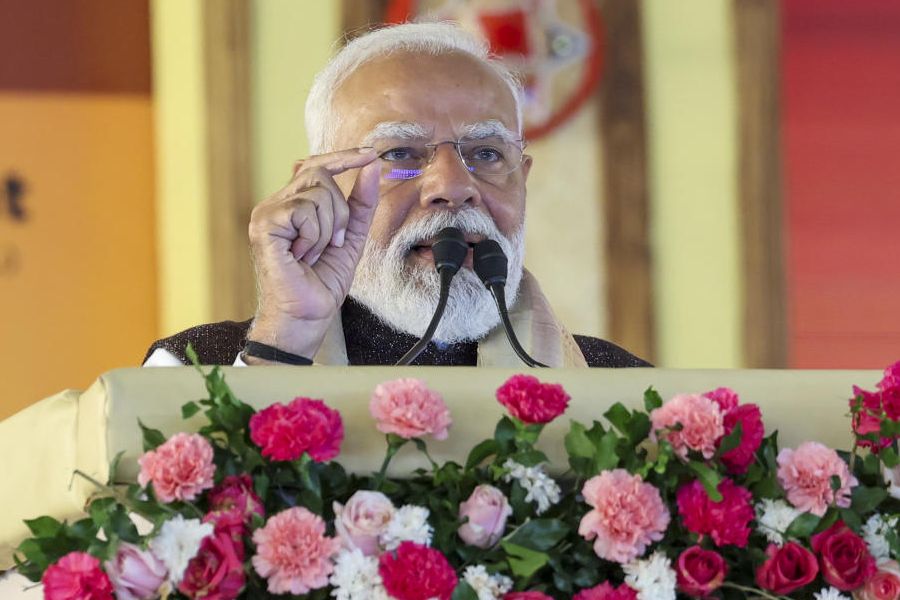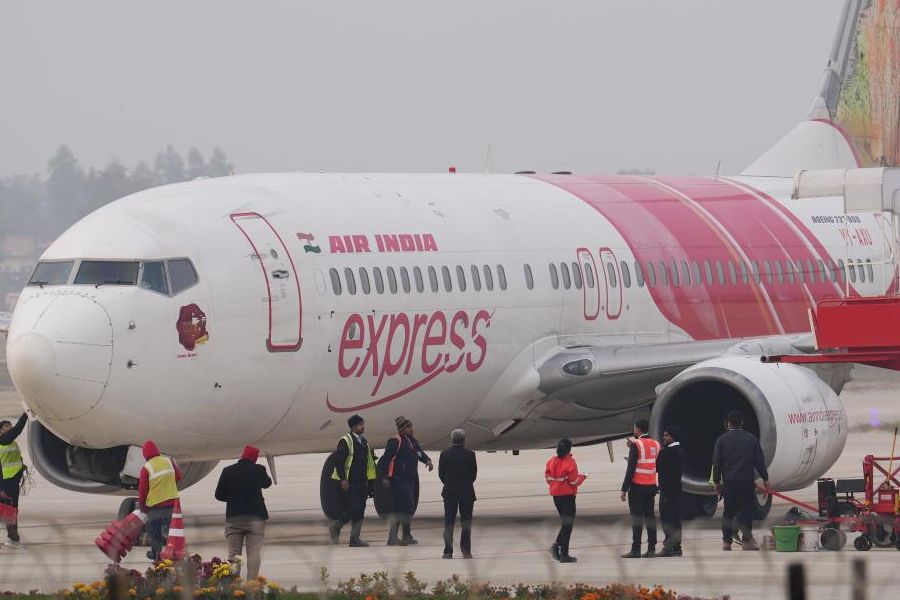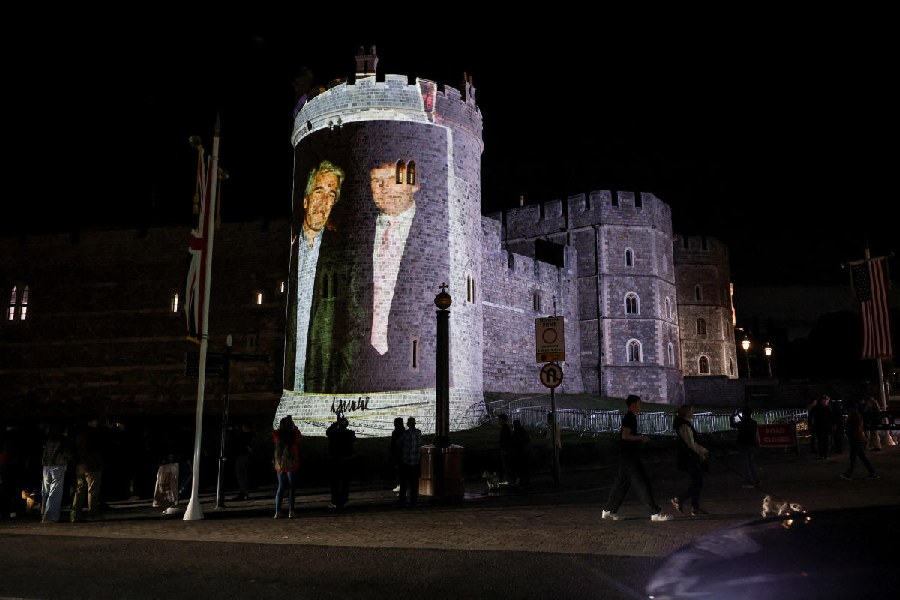 |
It was always acknowledged as one of the all-time classics of the Hindi screen. Everyone who had seen it, praised it sky-high. They were mesmerised by Madhubala?s luminous beauty, Dilip Kumar?s charm and Prithviraj Kapoor?s power-packed performance. Now Mughal-E-Azam, the 1940 Dilip Kumar-Madhubala blockbuster in 21st century Technicolor is playing in theatres across the country ? and by all accounts it?s the surprise hit of the season.
Amazingly, the digitally re-coloured Mughal-E-Azam with re-mastered Dolby sound is drawing crowds from the mobile phone-toting, computer literate generation. And, as it becomes a box-office hit, it?s sending other Bollywood producers scurrying to the archives wondering whether there could be other vintage movies that could be turned into Technicolor oldies but goldies.
Next to hit the screens will be B. R. Chopra?s 1957 patriotic film Naya Daur, which is slated for release in January 2005. That?s likely to be followed by Chopra?s 1967 release Gumraah and all his black and white movies. Also, heading for a new release in colour is Guru Dutt?s haunting Pyaasa. ?I personally believe that there are a lot of people who would like to see classics in colour and so, there is no harm in investing a little bit on updating them,? says B. R. Chopra?s son Ravi, who directed the film Baghbaan.
 |
Certainly, Mughal-E-Azam is doing better at the box-office than anyone ? from critics to those involved in the project ? had ever predicted. The historical costume drama is currently running house full which puts it in a neck-to-neck race with the Shah Rukh Khan-Preity Zinta-starrer, Veer-Zaara. ?The film is not only doing well in multiplexes but is also making good money at single-screen theatres. It has managed to attract both the young and the old,? says Deepesh Salgia, project director, Mughal-E-Azam.
As a result orders have already come in for 20 more prints. Says Salgia: ?When we started out, we expected a profit of Rs 15 lakh to Rs 20 lakh but now we think the stakes are much higher and profits might surprise everyone.?
Some critics insist that Mughal-E-Azam?s popularity with 21st century filmgoers shouldn?t be all that surprising. Says film critic Vinod Rathod: ?It is great to see Madhubala in colour. Besides that, Mughal-E-Azam is just the kind of film that lends itself to colour. The sets, the props and jewellery are all larger than life, so it is but natural that it is the first film to be coloured. I am not surprised it is doing so well.?
Mughal-E-Azam?s hit status has been a triumph for the firm that developed the software and carried out the job of adding colour to the classic. The Indian Academy of Arts and Animation Pvt Ltd (IAAA), worked on restoring and re-colouring the film, frame by frame, pixel by pixel, for a year-and-a-half. It started with around 20 technicians but by the time it finished there were 45 technicians labouring on it. Umar Siddiqui, IAAA?s 30-something managing director insists it was a labour of love. ?The simple desire to watch Hindi classics in colour was enough to excite and motivate the team,? he says.
Turning the movie into technicolor certainly wasn?t a simple task. For a start, IAAA had to work in collaboration with several other studios like the Chennai-based Iris Interactive, which restored the original Mughal-E-Azam negative and revived the damaged reels. Says Siddiqui: ?The original reel was in a very bad condition. Some parts were unstable, some scratched and others infected with fungus. So, before starting the colorization process work, we had to streamline all these problems.?
 |
According to the movie industry grapevine, colorizing Mughal-E-Azam cost about Rs 3.5 crore. But Salgia, the project director, says that the final bill was much higher and that huge amounts had to be spent on getting the soundtrack to produce mellifluous tones once again.
In fact, Mughal-E-Azam was much tougher to colorize because it was a costume drama set about 400 years ago. And the toughest parts of all were the battle scenes where there are around 2,000 extras hurtling into battle. Says Siddiqui: ?We had to pay extra attention to detail. Since Mughal-E-Azam is a period film, the clothes, jewellery, accessories, props and landscape were all from the Mughal period with details from that time.?
The team had to consult a range of sources ? both in the movie industry and historians who knew the finer details about Mughal dressing. Says Siddiqui: ?We had to talk to jewellery designers, light consultants, costume designers and industry insiders, who?d known K. Asif (the movie?s director).?
Luckily, the team had a reference point in the film itself. A 15-minute song sequence, Pyaar kiya to darna kya, was originally filmed in colour. ?That gave us a rough understanding of the director?s take on colour,? says Siddiqui.
Of course, some of the original team like actor Dilip Kumar and music director Naushad are still alive. But often they weren?t able to recall details. ?The duo did help but it?s too much to ask for them to remember colour and fabric worn 60 years ago,? laughs Salgia.
Besides colouring and restoring the film, the music track, too, has been revived. The film?s original composer, Naushad Ali, was closely involved with the digital makeover of the film?s legendary music. ?The original notes have been re-recorded but the voices of the singers were retained,? says Naushad, who recreated his compositions with help from music director Uttam Singh.
Getting the music right was, in fact, particularly tough. Says Salgia: ?For the music, I had to go abroad. As we wanted to upgrade the soundtrack to Surround Sound, we had to separate the mix tracks at a US studio and re-record the tracks here in Mumbai. It was a lot of hard work and the cost, too, was very high.? Salgia had approach a Hollywood studio a few years ago with the project but was deterred by the steep costs.
IAAA says it has triumphed in more ways than one with this project. It has patented Effect Plus, the software used, and says its technology is far ahead of what?s available in Hollywood.
It should, of course, be noted that colorization itself is nothing new. Several Hollywood studios have successfully colorized films and television serials but so far the colorization has been done for either video (commonly called VHS) or DVD. Theatrical release requires a different technology and format altogether. Transferring a re-coloured film onto DVD or VHS is a relatively easy task but the job gets tricky once the digitally re-coloured film has to be converted into a negative ? and that?s where IAAA says it?s ahead.
Nevertheless, others are also heading swiftly in the same direction. Ravi Chopra has hired West Wing Corporation, a Florida based company that has set up a plant in Goa to turn Naya Daur from black and white into colour.
Chopra says that he?s very happy with the results even though it?s cost him a whopping Rs 5 crore. He is sending every reel to the US for final approval. ?I?d initiated the process of colouring Naya Daur quite a long time ago but took my time to ensure quality,? says Chopra.
It must, of course, be said that colorization is a controversial affair ? and the debate in India is only just beginning. Back in the ?80s, media moghul Ted Turner created a storm by saying he?d colorize all the black-and-white films in the MGM archives. Turner?s proposal triggered a huge movie industry row with loud denunciations of the move by figures like John Huston, Jimmy Stewart and Woody Allen, among others, all of whom saw colorization as defilement of the original work.
 |
Things became most controversial when monochromatic classics like Casablanca, Citizen Kane and It?s a Wonderful Life were threatened with colorization. Interestingly, the demand for coloured films has greatly diminished and only a few old television programs continue to appear in coloured versions.
While purists may cringe, colorization patrons believe that the new generation must get a chance to savour the classics. Says actor Dilip Kumar: ?A large section of today?s audience will remain deprived of the opportunity to savour these classics if they aren?t revived in a new format.? Also, there?s the promise of increased profits as rights can also be sold to satellite TV channels or in DVD/VHS format.
But the question remains how long will the trend last? Mughal-E-Azam, with its stunning costumes and impressive sets is essentially a love story that appeals to everyone. But patriotic or socialist films like Naya Daur, Pyaasa or Shree 420 don?t necessarily lend themselves to colour. But for the Indian film industry, where originality is scarce and Rs 3.5 crore loose change ? colorization might be the surest way to show profits this financial year.
Photographs of IAAA technicians and Omar Siddiqui by Gajanan Dudhalkar
Mughal-E-Azam
 |
Touted as India?s first big budget film, Mughal-E-Azam was first released on August 5, 1960 at Mumbai?s Maratha Mandir cinema. The foyer was decked out to resemble a Mughal palace, the invitations were designed to look like royal scrolls and the cans of film were brought to the theatre atop an elephant. The Dilip Kumar-Madhubala-Prithviraj Kapoor film went on to become the longest-running film in the history of Indian cinema, a record only broken by Sholay much later.
The film cost the director K. Asif a whopping Rs 1.5 crore, which was financed by Sterling Investment Pvt Ltd (Shapoorji Pallonji & Co). The film took a decade and the fastidious K. Asif overstretched the budget and schedule. For authenticity, he insisted on a small army of craftspersons from Kolhapur, ironsmiths from Rajasthan and zari workers from Hyderabad to create the period costumes, jewels and weapons. The central battle sequence, where son takes on father, featured 4,000 horses, dozens of elephants and a cast of 8,000. For the Sheesh Mahal (the hall of mirrors) sequence to picturise the poignant song, Pyar kiya to darna kya, Belgian glass worth Rs 15 lakh was imported. Having begun his film in black and white, Asif, with three-quarters of the film in the can, decided to shoot just this one sequence in the newly available technicolor. He was so impressed with the rushes that he decided to remake the film all over again in colour. His financiers, weary after nearly seven years of waiting, refused.











